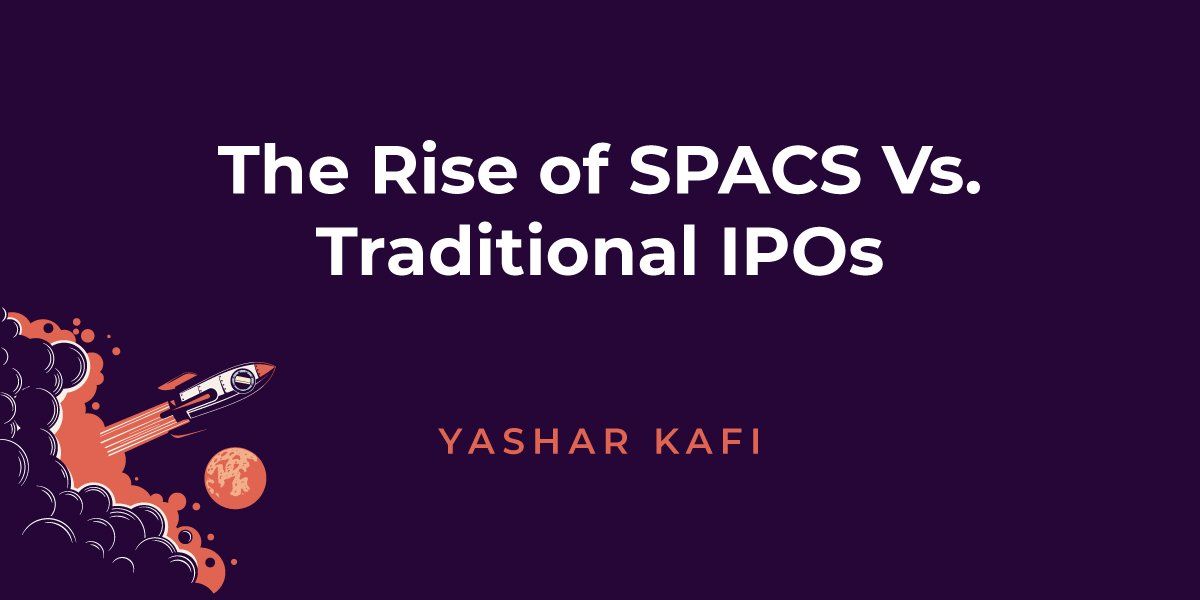The Rise of SPACS Vs. Traditional IPOs
Unless you’ve been living under a bridge, you’ve probably heard at least some of the recent buzz about SPACS, a new trend for taking companies public. And while you’ll undoubtedly hear high praise, are they all they’re cracked up to be? Is taking this route truly a viable shortcut for success? Let’s talk about it.
What Are SPACS?
In a nutshell, SPACS (special acquisition company or corporations) are shell companies set up for the sole purpose of acquiring a company. It’s already public. The SPAC is a public entity, and it has shareholders and the like, but it doesn’t do anything. No business actually transpires in a SPAC. In our vernacular, we call it a shell company with money that has one goal: to bring a singular company to the public markets.
The rise of SPACS has been fuelled by early-stage companies wanting IPOs but not wanting to invest the time, money, and work the standard approach entails. Simply put: A SPAC promises a fast way to bring in investment cash for growth.
It’s a lot easier to go through the SPAC route than to go to the traditional IPO because there is far less due diligence required for a SPAC. Translation: There’s a lot less work that the company and entity have to do, such as reviewing the company’s financials to see if it’s actually making money and/or checking to see if there are any fundamental weaknesses or material weaknesses in the company itself.
The Pros and Cons of SPACS
As a shareholder, the advantage of investing in a SPAC is that, ideally, you’re hoping that SPAC has identified a target, has already signed a purpose letter with that target, and is looking to bring that company to market.
While this approach does work for some (we are seeing it every day all around us), taking the SPACS route does lend itself to instant gratification at the loss of the perhaps more slow, steady (and well researched) approach like traditional IPOs.
The way I see it is that SPACS are like shiny new toys. Like we see in the realm of ever-evolving technology, people are rushing to SPAC their companies and go public without doing the proper due diligence, and without really taking a hard look first and asking with a discerning eye: “Are they really ready to go public?”
The challenge lies in the schism presented when you suddenly have this capability to do something (easily and quickly go public), yet you’ve forgotten all the fundamentals of what you need to do. And you’d never really check to make sure that tool can do the fundamentals. People will go to these shiny new tools, and then in three, four, six months realize that it maybe doesn’t do everything they need it to do. Again, translation: The SPAC’s just not meeting the company’s requirements.
Better, Faster, Cheaper?
Only you can choose what approach is best for you. My main goal is to simply provide you with food for thought, so you can research further on your own and make a decision armed with all the facts. My main point is this: With all of the tools around us these days, people are instantly attracted to what is better, faster, cheaper, etc. But, is it really better? Is it really cheaper? (Think closely about how you measure what is costly: It’s not just about finances.) And who benefits in the long run? As a consultant, this ties into everything we do. You can hire a cheaper consultant, but are you going to get the results?
*Disclaimer: I want it to be clear here that I am in no way providing financial advice with this article. I have no real financial experience to provide anybody with advice on a topic like this. But it’s interesting that companies are circumventing the traditional IPO route to use SPACs to go public, and I wanted to open up a discussion surrounding the topic and the pros and cons.




